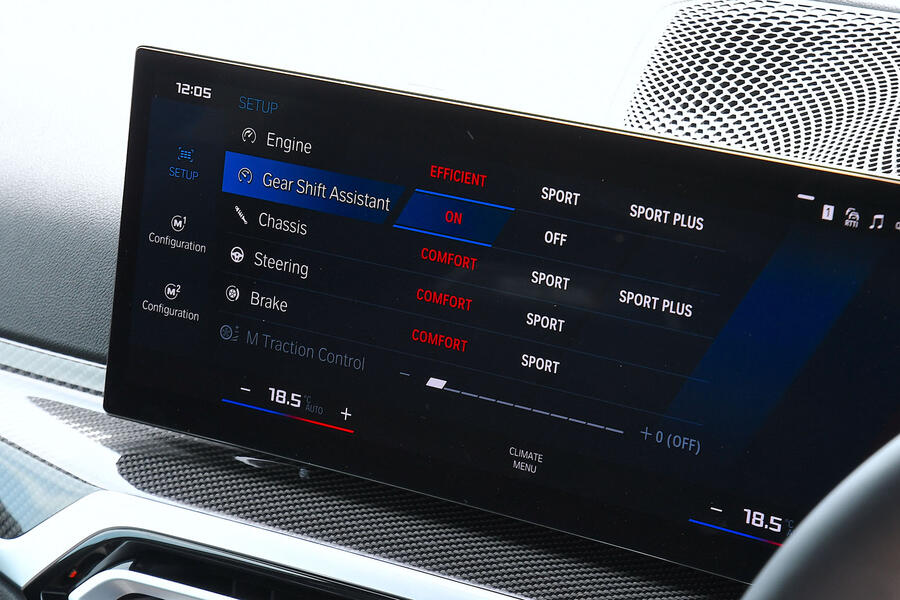That M Race Track package isn’t cheap (£9095), but it does add to the M2’s cabin the lightweight carbonfibre-shelled bucket front seats that have appeared on so many new M cars these past few years. They helped to lower our test car’s weight to 1687kg in running order and with a three-quarter-full tank of petrol.
But they also exacerbated an ergonomic problem for the M2, one that isn’t very common in modern M cars. Go for a manual M2 – it’s the only M car UK buyers can option as such, so you may well choose to do so – and you will notice a marked pedal offset in the footwell.
BMW evidently had its work cut out squeezing three pedals and a footrest into a space that typically only needs to accommodate two, and it has only been able to do so – in right-hand-drive cars such as ours, at least – by aligning the clutch with the centreline of the driver’s seat and offsetting the brake and accelerator by some way.
As low as those carbonfibre buckets allow you to sit, their deep cushion bolsters make that offset more pronounced and put the onus on your right ankle to articulate somewhat in order to get on the pedals properly.
Testers were divided on whether they found the aggressive buckets comfortable, with some complaining about the lack of padding and lumbar support. Thankfully, they’re optional and the standard seats are still pretty supportive.
The M2’s cabin is quite practical by compact car standards – something that, you might argue, the M2 no longer qualifies as. The back seats are a little tricky to enter easily and really only offer room for younger children, but they provide handy storage and fold flat for a useful extension of the boot.
In terms of its control and instrument layout and pervading material quality, Munich is right to bill this car as it has. The M2 looks like a fully fitted M car in every key way, from the secondary control concept (M1 and M2 driver mode buttons? Check) to the digital instruments, satin chrome and carbonfibre decor and even the three-colour M Power ambient lighting panels in the doors.
For 2025, there have been some minor changes inside, including a redesigned steering wheel. BMW was one of the last holdouts against flat-bottomed steering wheels but has finally caved – and it has taken the opportunity to get rid of the button for the rim heating too.
Multimedia system

BMW’s Curved Display infotainment system looms large within the compact confines of the M2. It’s made up of a 12.3in digital instrument screen and a 14.9in central control display, the latter governed by BMW’s Operating System 8.0 software, or OS 8.5 from 2025. There’s also a colour head-up display.
The M2 gets BMW’s rotary input device on the transmission tunnel, which makes its multimedia system much easier to navigate and less distracting while driving. Said rotary cursor is also an older version with better haptics than what you get in the 5 Series and X3.
In addition, the M department gets to make some tweaks of its own to the infotainment and adds a few buttons for the drive mode. As a result, M cars have slightly simpler, clearer menus, making them easier to use.
Even so, BMW’s current infotainment system is quite fussy and complicated and incorporates the heating and ventilation controls in a rather inelegant way. IDrive today is considerably worse than it was five years ago. The sat-nav routing and mapping is still excellent, at least.

